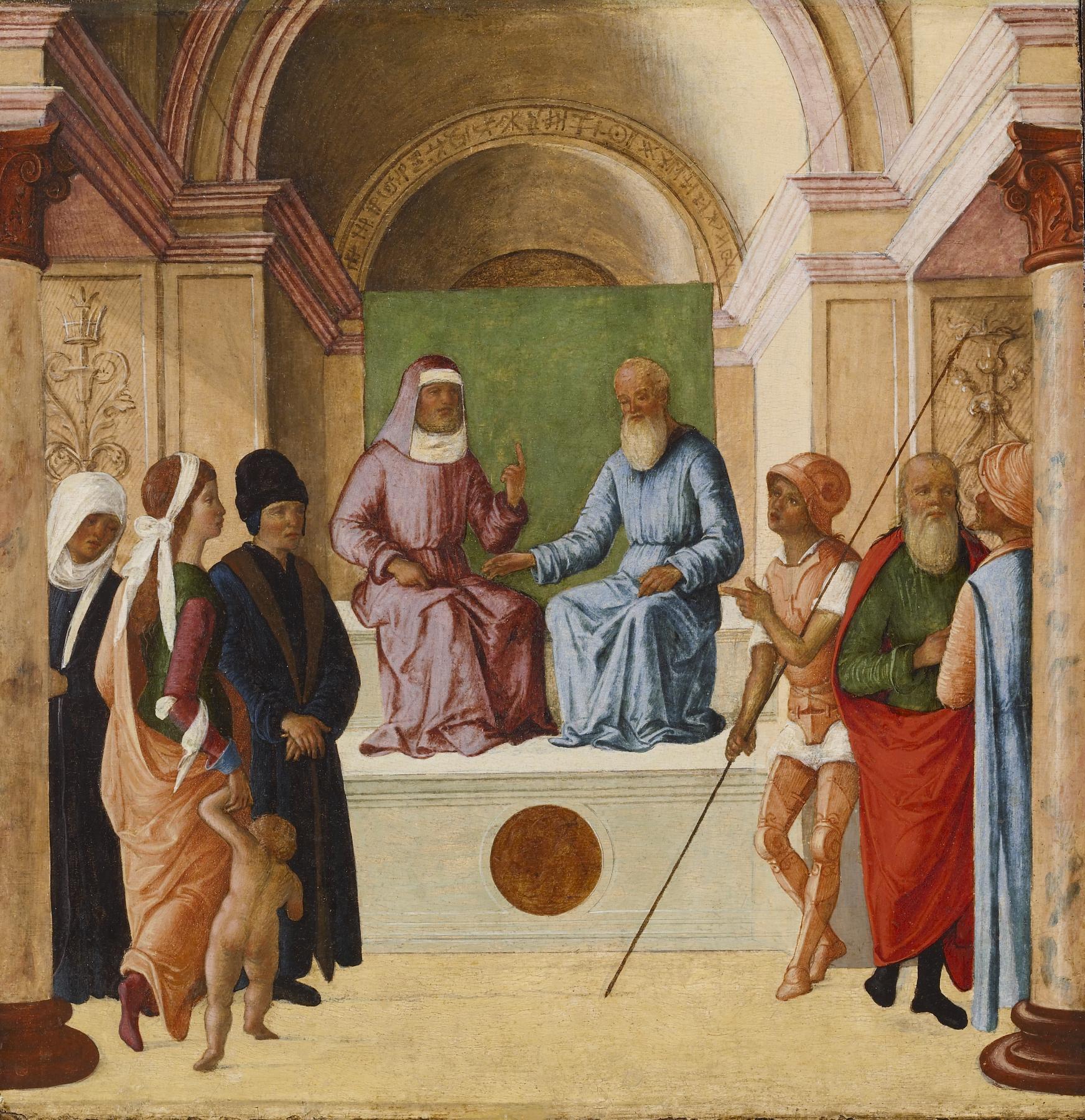The Story of Susanna: The Elders as Judges
(Renaissance Europe )
This panel is from a series illustrating critical events in the life of the biblical figure Susanna. As told in the Old Testament Book of Daniel, Susanna was a young Babylonian woman who was accosted by two lecherous old judges while bathing in her private garden. After rejecting their advances, the judges accused Susanna of adultery and she was sentenced to death. But through the just intervention of a young nobleman named Daniel, Susanna was proven innocent and her virtue preserved. This panel represents the beginning of the story and shows the two elders seated as judges. It was originally followed by a panel of the elders spying on Susanna (a likely fragment of which is now at the Pushkin Museum in Moscow), which was in turn followed by a panel depicting Susanna’s arrest (now lost or unidentified). There are two more extant panels from the series. One of Daniel’s interrogating the judges is (2019) with a dealer in Bologna; the judges' subsequent death by stoning is thought to be in a private collections. The series probably functioned as a set of small “spalliere," paintings installed in the wainscoting of a palace bedchamber at shoulder height (“spalla” meaning “shoulder” in Italian). The story of Susanna was a popular in the Renaissance as model example of chastity and the application of good and fair judgment. For another set of larger spalliera panels depicting the story, see Walters 37.480, 37.485 and 37.490.
Born and trained in the north Italian city of Ferrara, Lorenzo Costa moved to Bologna in 1483 where he worked for the powerful Bentivoglio family. In 1507 he moved to Mantua and was appointed as court painter to that city's ruling family, the Gonzaga. The Susanna series is probably among Costa's earlier works from the late 1480s. The sculptural, hard-edged style is close to his Bentivoglio altarpiece, dated 1488, in the church of San Giacomo Maggiore, Bologna. The careful, symmetrical structuring of the architecture conveys a sense of societal stability that is of course misleading in this story of corruption within the halls of justice. The purple-red (porphyry) roundel prominently placed on the dais is a traditional symbol indicating a site of power.
Inscription
Provenance
Provenance (from the French provenir, 'to come from/forth') is the chronology of the ownership, custody, or location of a historical object. Learn more about provenance at the Walters.
Private collection, Milan, prior to 1859 [mode of acquisition unknown]; Henry Walters, Baltimore, 1911 [mode of acquisition unknown]; Walters Art Musuem, 1931, by bequest.
Exhibitions
| 2006 | The Art of Law: Legal Documents from the Collection of The Walters. The Walters Art Museum, Baltimore. |
Conservation
| Date | Description | Narrative |
|---|---|---|
| 3/30/1965 | Treatment | chemical analysis; examined for condition; other |
| 2/5/1987 | Examination | examined for condition; examined for exhibition |
| 2/16/1987 | Treatment | coated; filled; inpainted; lined; other; varnish removed or reduced |
Geographies
Italy, Ferrara (Place of Origin)
Measurements
Painted surface H excluding new strip added to the right side: 17 3/8 x W: 17 1/4 x D: 1 in. (44.1 x 43.8 x 2.5 cm)
Credit Line
Acquired by Henry Walters, 1911
Location in Museum
Not on view
Accession Number
In libraries, galleries, museums, and archives, an accession number is a unique identifier assigned to each object in the collection.
In libraries, galleries, museums, and archives, an accession number is a unique identifier assigned to each object in the collection.
37.476


